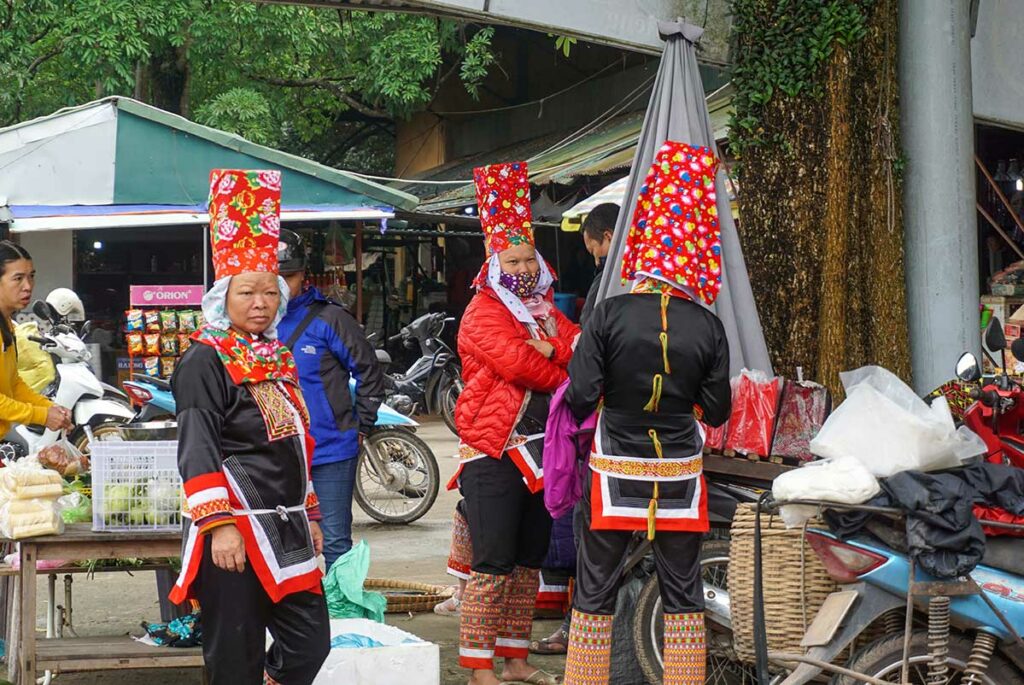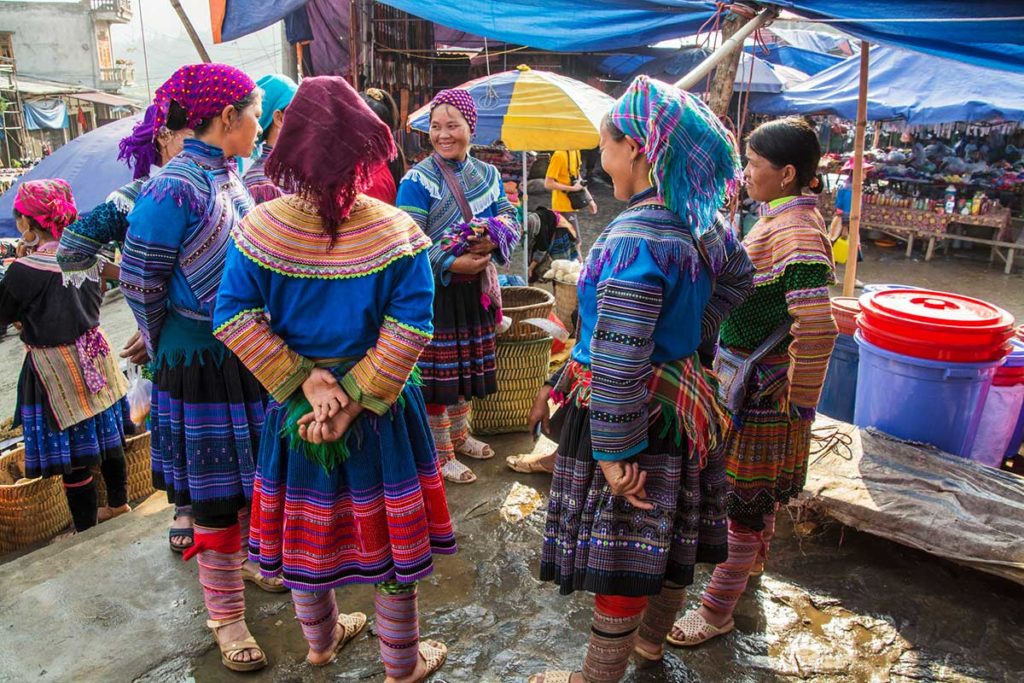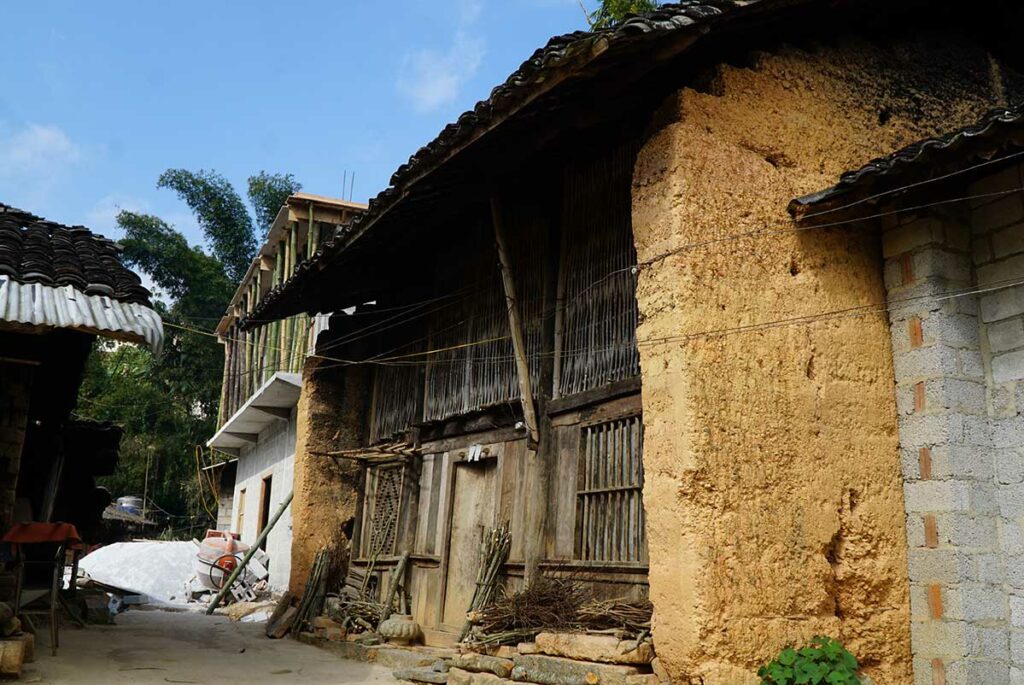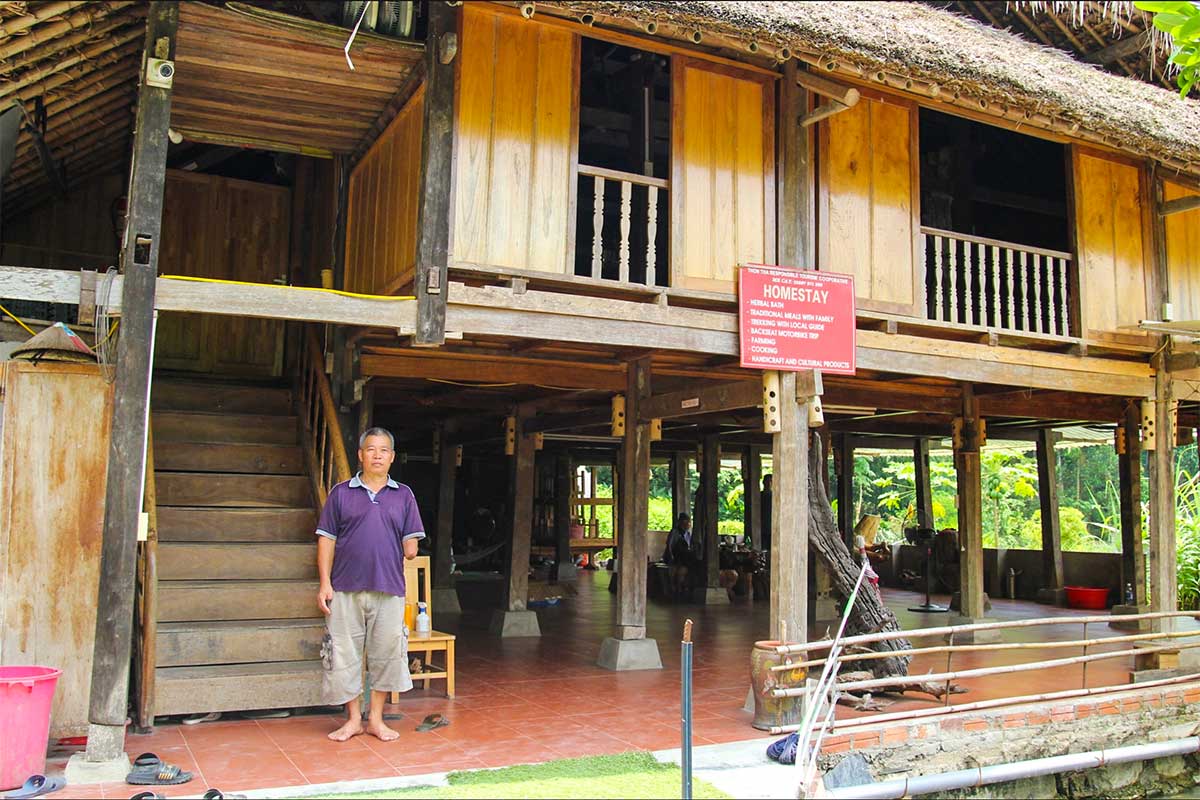There are 54 ethnic groups in Vietnam, each with their own unique customs, traditions, and beliefs. As a traveler in Vietnam, experiencing the cultures of these ethnic groups can be an enriching and unforgettable experience. From visiting local markets and festivals to learning traditional crafts and trying delicious local cuisine, immersing oneself in the culture of Vietnam’s ethnic groups is a must-do for any traveler to this fascinating country.
Where do the ethnic groups in Vietnam live?
The ethnic groups in Vietnam are scattered throughout the country, inhabiting both the northern, central, and southern regions. It is a common misconception that they only live in northern Vietnam. In reality, there are several ethnic minority groups living in the central highlands and southern regions, each with their own unique cultures and traditions.
Different cultures of ethnic groups in Vietnam
Vietnam is home to over 50 different ethnic groups, each with their own unique culture, customs, and way of life. Many of these groups have their own distinct language, dress, and traditions, making for a rich tapestry of diversity and culture across the country.
One of the most striking aspects of Vietnam’s ethnic groups is their clothing styles. Women, in particular, are known for their colorful and intricate clothing, which often reflects their ethnic identity. For example, the Red Dao women in the northwestern region of Vietnam wear elaborate headdresses and intricately embroidered dresses, while the Cham people in central Vietnam wear brightly colored sarongs and conical hats.



Another notable aspect of Vietnam’s ethnic groups is their livelihoods and specialties. For example, the Tay people are known for their expertise in rice cultivation and embroidery, while the Hmong people specialize in weaving and silverwork. The Muong people are skilled in fish farming and handicrafts, while the Ede people are known for their musical talents and wood carving.
In addition to their unique clothing and livelihoods, Vietnam’s ethnic groups also have their own distinct ways of building and living. Many live in houses on stilts, particularly in areas prone to flooding, while others build their homes out of stone, wood, or clay. The architecture of each ethnic group reflects their cultural and environmental values, with some placing greater importance on communal living and others on privacy and individual space.


Despite their differences, Vietnam’s ethnic groups also share many similarities and are united by a deep sense of national identity. Whether they live in the mountains, the plains, or along the coast, the people of Vietnam have a rich and diverse cultural heritage that is celebrated throughout the country.
Tip! Do you want to experience the culture and life of these ethnic groups in Vietnam? Read 9 best ways to experience Vietnam ethnic groups
List of 54 ethnic groups in Vietnam
- Ba Na ethnic group: The Ba Na people are primarily located in the Central Highlands region of Vietnam, particularly in the provinces of Kon Tum and Gia Lai. They are known for their distinctive communal Rong houses, which are used for important community events and ceremonies.
- Bo Y ethnic group: The Bo Y are a small ethnic group primarily located in the mountainous regions of northern Vietnam, particularly in Lao Cai and Ha Giang provinces. They are known for their traditional blacksmithing skills, and are often referred to as “blacksmith” or “ironworking” people.
- Brau ethnic group: The Brau people are an ethnic minority group primarily located in the Central Highlands region of Vietnam, particularly in Kon Tum and Quang Nam provinces. They are known for their traditional textiles, particularly their indigo-dyed fabrics.
- Bru Van Kieu ethnic group: The Bru Van Kieu people are primarily located in central Vietnam, particularly in the provinces of Quang Binh and Quang Tri. They are known for their music and dance, which is often accompanied by traditional instruments such as gongs and flutes.
- Cham ethnic group: The Cham people are an ethnic minority group primarily located in central Vietnam, particularly in Ninh Thuan and Binh Thuan provinces. They have a rich history and culture, with influences from Hinduism and Islam, and are known for their distinctive architecture, particularly their Cham towers.
- Cho Ro ethnic group: The Cho Ro people are an ethnic minority group primarily located in the Central Highlands region of Vietnam, particularly in Dak Lak province. They are known for their traditional basket weaving, and for their unique communal houses, which are built on stilts and can house multiple families.
- Chu Ru ethnic group: The Chu Ru people are primarily located in the Central Highlands region of Vietnam, particularly in Lam Dong and Dak Lak provinces. They are known for their traditional gong music, which is an important part of their cultural heritage.
- Chut ethnic group: The Chut people are an ethnic minority group primarily located in the mountainous regions of northern Vietnam, particularly in Ha Giang province. They are known for their unique language, which is distinct from other ethnic minority languages in the region.
- Co ethnic group: The Co people are an ethnic minority group primarily located in the mountainous regions of northern Vietnam, particularly in Lao Cai and Ha Giang provinces. They are known for their traditional weaving skills, particularly for their intricate textile patterns.
- Cong ethnic group: The Cong people are primarily located in the mountainous regions of northern Vietnam, particularly in Lai Chau and Dien Bien provinces. They are known for their distinctive traditional dress, which features brightly colored embroidered patterns.
- Co Ho ethnic group: The Co Ho people are mainly located in the mountainous areas of the northern province of Cao Bang. They are known for their unique weaving techniques and traditional costumes that are made of hemp and dyed with indigo. They are also skilled in forging and wood carving.
- Co Lao ethnic group: The Co Lao people are found in the northern provinces of Cao Bang, Lang Son, and Ha Giang. They are famous for their unique music and dance performances, which are often accompanied by traditional instruments such as the bamboo flute and the two-stringed lute. They are also known for their traditional costumes made of linen and hemp.
- Co Tu ethnic group: The Co Tu people are mainly located in the central provinces of Quang Nam and Thua Thien-Hue. They have a rich culture of handicrafts, including weaving, embroidery, and bamboo and rattan crafts. They are also known for their gong music, which is an important part of their festivals and ceremonies.
- Dao ethnic group: The Dao people are found in many parts of Vietnam, with the largest populations in the northern provinces of Lao Cai, Ha Giang, and Tuyen Quang. They are famous for their unique costumes, which are made of bright colors and decorated with intricate embroidery. They are also known for their traditional silver jewelry and herbal medicine practices.
- E De ethnic group: The E De people are primarily located in the Central Highlands region of Vietnam, including the provinces of Dak Lak, Dak Nong, and Lam Dong. They have a rich culture of gong music, which is often played during their festivals and celebrations. They are also skilled in wood carving and have a unique style of architecture, characterized by communal houses with towering thatched roofs.
- Giay ethnic group: The Giay people are found in the northern mountainous provinces of Lao Cai and Lai Chau. They are known for their intricate textile weaving, which is often done using a backstrap loom. Their traditional costumes are also notable, as they are made of bright colors and often decorated with intricate embroidery.
- Gia Rai ethnic group: The Gia Rai people are mainly located in the Central Highlands region of Vietnam, including the provinces of Gia Lai and Kon Tum. They have a rich tradition of gong music and are skilled in basket weaving and wood carving. Their unique funerary customs involve building large, elaborate tombs for their deceased.
- Gie Trieng ethnic group: The Gie Trieng people are found in the southern part of the Central Highlands, including the provinces of Kon Tum and Gia Lai. They are known for their unique music, which is played on traditional instruments such as the bamboo xylophone and the two-stringed lute. They also have a rich tradition of handicrafts, including weaving and basketry.
- Ha Nhi ethnic group: The Ha Nhi people are located in the mountainous areas of the northern provinces of Lao Cai and Lai Chau. They have a rich tradition of textile weaving, using a backstrap loom and natural dyes made from plants. They are also skilled in metalworking, wood carving, and making traditional musical instruments.
- Hoa ethnic group – can be found in many urban areas in Vietnam. They are descendants of Chinese immigrants and are known for their traditional Chinese customs and practices, such as ancestor worship and the celebration of the lunar New Year.
- Hre ethnic group – mainly live in the central highlands of Vietnam. They are known for their unique weaving techniques and traditional instruments like the krong put and t’rung, which are often used in Hre musical performances.
- Khang ethnic group – mostly live in the mountainous areas of northern Vietnam. They are known for their traditional blacksmithing skills, as well as their intricate embroidery and textile work.
- Khmer ethnic group – concentrated in the Mekong Delta region in southern Vietnam. They are known for their unique architecture, especially their distinctive temples, as well as their traditional silk weaving and fishing techniques.
- Kho Mu ethnic group – mainly live in the northwest region of Vietnam. They are known for their traditional songs and dances, which often tell stories about their history and way of life.
- Kinh (Viet) ethnic group – as the largest ethnic group in Vietnam, they can be found in most parts of the country. They are known for their rich history and culture, including traditional customs like the Tet holiday and their famous cuisine, such as pho and banh mi.
- La Chi ethnic group – mainly live in the northern highlands of Vietnam. They are known for their unique brocade weaving and intricate silver jewelry, which are often used in traditional La Chi dress and ceremonies.
- La Ha ethnic group – primarily live in the mountainous regions of northern Vietnam. They are known for their traditional handicrafts, such as basket weaving and bamboo crafts, as well as their unique musical instruments like the khen and saranai.
- La Hu ethnic group – mainly live in the northern mountainous regions of Vietnam. They are known for their traditional hunting and gathering practices, as well as their unique musical instruments like the dan moi and nhi.
- Lao ethnic group – mainly live in the northern mountainous regions of Vietnam. They are known for their traditional clothing, including the distinctive black turbans worn by Lao men, as well as their traditional basket weaving and silver jewelry-making skills.
- Lo Lo ethnic group – The Lo Lo people live in the mountainous regions of Northern Vietnam. They are known for their colorful traditional costumes, intricate silver jewelry, and unique customs and rituals.
- Lu ethnic group – The Lu people reside mainly in the mountainous areas of northern Vietnam. They are known for their rich cultural heritage, including unique musical instruments, folk songs, and dances.
- Ma ethnic group – The Ma people live primarily in the northern provinces of Vietnam, near the Chinese border. They are known for their unique weaving techniques, traditional textiles, and for being skilled farmers and hunters.
- Mang ethnic group – The Mang people live in the mountainous regions of northern Vietnam, primarily in Lai Chau Province. They are known for their unique language, customs, and their expertise in cultivating rice terraces on steep mountain slopes.
- Mong (H’Mong) ethnic group – The H’Mong people are one of the largest ethnic minority groups in Vietnam, living primarily in the mountainous regions of the north. They are known for their vibrant and colorful traditional clothing, intricate embroidery, and for their rich cultural heritage, including music, dance, and festivals.
- M’nong ethnic group – The M’nong people live mainly in the Central Highlands of Vietnam, primarily in Dak Lak Province. They are known for their unique cultural traditions, including their musical instruments, epic poetry, and their practice of building communal houses called “rong”.
- Muong ethnic group – The Muong people reside in the mountainous regions of northern Vietnam, primarily in Hoa Binh Province. They are known for their rich cultural heritage, including their traditional stilt houses, unique costumes, and their expertise in rice cultivation.
- Ngai ethnic group – The Ngai people live mainly in the Central Highlands of Vietnam, primarily in Gia Lai Province. They are known for their unique cultural traditions, including their architecture, bamboo weaving, and for their vibrant and colorful traditional clothing.
- Nung ethnic group – The Nung people reside mainly in the mountainous regions of northern Vietnam, primarily in Lang Son and Cao Bang Provinces. They are known for their unique customs and practices, including their worship of ancestors, their traditional papermaking, and for their expertise in cultivating crops on mountain slopes.
- O Du ethnic group – The O Du people live primarily in the central region of Vietnam, in Quang Binh Province. They are known for their unique cultural heritage, including their traditional costumes, music, and dance, and for their use of herbal medicine.
- Pa Then ethnic group: The Pa Then people are mainly found in the mountainous areas of northern Vietnam, especially in Tuyen Quang province. They have a rich cultural identity and are known for their distinctive music, dance, and traditional clothing, which often features bright, intricate embroidery.
- Phu La ethnic group: The Phu La people live in several provinces in northern Vietnam, including Lao Cai, Ha Giang, and Cao Bang. They are well-known for their embroidery skills, creating elaborate patterns on their traditional clothing and household items. They also have a unique writing system that is still used in some communities.
- Pu Peo ethnic group: The Pu Peo people live primarily in the mountainous areas of northern Vietnam, near the border with China. They are known for their rich cultural traditions, including music, dance, and colorful costumes. They also have a strong spiritual connection to the natural world and practice animism, a belief that all objects, places, and creatures have a soul.
- Ra Glai ethnic group: The Ra Glai people primarily live in the coastal regions of central Vietnam, especially in Ninh Thuan and Binh Thuan provinces. They have a rich cultural heritage and are known for their weaving skills, creating intricate patterns on their clothing and baskets. They also have unique customs related to birth, marriage, and death.
- Ro Mam ethnic group: The Ro Mam people live in the mountainous areas of central Vietnam, especially in Quang Nam and Quang Ngai provinces. They have a rich cultural identity and are known for their unique weaving techniques, creating intricate patterns on their clothing and baskets. They also have a tradition of building communal houses where they gather for important events and ceremonies.
- San Chay ethnic group: The San Chay people live in several provinces in northern Vietnam, including Bac Giang, Tuyen Quang, and Thai Nguyen. They have a rich musical heritage and are known for their folk songs and unique instruments, including the dan tinh (a plucked string instrument) and the sáo trúc (a bamboo flute). They also have a rich culinary tradition, with unique dishes like bánh khảo (a type of rice cake).
- San Diu ethnic group: The San Diu people live in several provinces in northern Vietnam, including Ha Giang, Thai Nguyen, and Quang Ninh. They are known for their embroidery skills, creating intricate patterns on their traditional clothing and household items. They also have unique customs related to marriage and funeral rituals.
- Si La ethnic group: The Si La people live in the mountainous areas of northern Vietnam, especially in Lai Chau province. They are known for their distinctive music and dance traditions, often featuring the khen (a type of bamboo pipe). They also have a rich mythology and oral storytelling tradition.
- Tay ethnic group: The Tay people are one of the largest ethnic groups in Vietnam and can be found in many provinces throughout the country, including Cao Bang, Bac Kan, and Ha Giang. They have a rich cultural heritage and are known for their music, dance, and traditional clothing, which often features bold, colorful patterns. They also have a unique system of social organization based on the “tò he” (village council) which governs the village.
- Ta Oi ethnic group: The Ta Oi people primarily live in the mountainous regions of central Vietnam, especially in Thua Thien Hue and Quang Nam provinces. They are known for their elaborate weaving skills, creating intricate patterns on their clothing and baskets. They also have a rich tradition of herbal medicine, using plants and herbs for healing and health maintenance.
- Thai ethnic group – The Thai people in Vietnam are mainly concentrated in the mountainous areas of the northwest. They are known for their colorful traditional costumes, traditional dances and songs, and for their handicrafts such as weaving and embroidery.
- Tho ethnic group – The Tho people are mostly found in the north-central region of Vietnam, especially in Thanh Hoa and Nghe An provinces. They are famous for their traditional music and dances, especially the “hat xoan” singing and “Xoe” dance.
- Xinh Mun ethnic group – The Xinh Mun are a small ethnic group living in the mountainous areas of the northernmost province of Ha Giang. They are known for their unique culture, including their music and dance, as well as their traditional costumes, which are decorated with silver coins and beads.
- Xo Dang ethnic group – The Xo Dang people are found in the central highlands of Vietnam, primarily in Kon Tum and Gia Lai provinces. They are known for their rich cultural heritage, including their unique language, music, and art. They are also renowned for their impressive communal houses, which are large and elaborately decorated.
- Xtieng ethnic group – The Xtieng people are located in the central highlands of Vietnam, mainly in Dak Lak, Dak Nong, and Gia Lai provinces. They are famous for their traditional handicrafts, particularly their basketry and pottery, as well as their unique gong music and dance. They are also known for their impressive communal houses, which are built on stilts.
